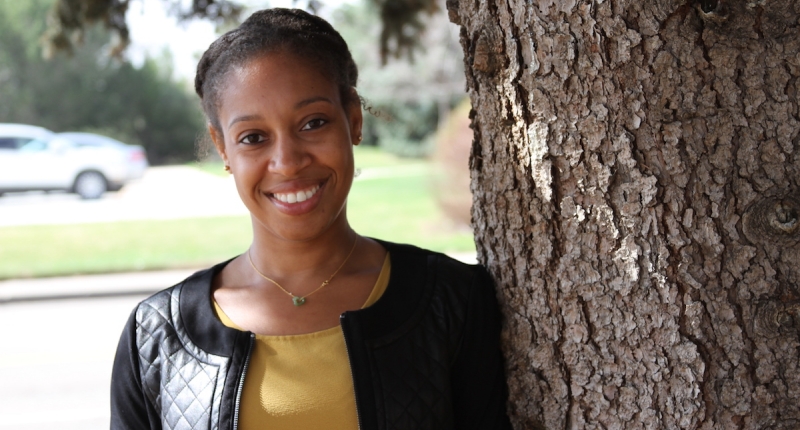NCEAS Portrait: Sparkle Malone on Learning Open Science to Solve Nature's Mysteries

The diversity of unknowns waiting to be discovered: The awe of that is what drives Sparkle Malone’s passion for ecology, and sharing the data and methods underlying her discoveries – what was once practically taboo among scientists – has become an important part of her scientific process.
Malone is among the growing number of researchers who have embraced open science, the general philosophy and practice of making data and methods transparent, accessible, and reusable. She first came to it through a sort-of boot camp that NCEAS held in 2014 called Open Science for Synthesis, and since then the skills and techniques she learned have transformed how she works.
“I immediately recognized how important open science was to my own research since I often use data collected by different networks,” said Malone, who is an assistant professor in biological sciences at Florida International University.
Malone now pays it forward by applying open science principles to her research into the effects of climate change, wildfires, and other disturbances on ecosystems, especially forests and wetlands, and the “services” they provide that people rely on, such as carbon sequestration. Given the pace of these changes, making her data available to and usable by others can help accelerate the science to understand them.
“I hope my research will provide the information required to sustain the health, diversity, and productivity of natural ecosystems,” said Malone.
We asked Malone about her experience learning and practicing open science in this month’s NCEAS Portrait.
As an early career researcher, how do you perceive attitudes toward open science among your generation of scientists?
SM: I think there is strong recognition that open science is the foundation of reproducible research. Incentive structures are changing, and everyone is taking notice. Although open science is often viewed positively, I often hear concerns about the appropriate use of data and products that have been made available. You have to commit to providing enough information on both the strengths and limitations of all data and products produced to prevent mis-use of information. But the strengths of open science far out weight the challenges.
How has learning open science practices changed the way you work?
SM: I now spend more time thinking about how I store products – such as data, analysis scripts, processing manuals, and work flows – and make them available to others. I try to provide the finished products, raw data, and the scripts used to analyze data and develop products. Doing this helps me share information more efficiently, but also helps to remind me what I have done and still need to do, which ultimately enhances my productivity.
What is something that practicing open science has enabled you to do that you don’t think you could have done otherwise?
SM: Open science facilitates synthesis projects and large collaborative efforts. Making data and scripts available allows other researchers to access my work without the limitation of my own capacity to respond to their needs.
In the Open Science for Synthesis course, I worked on a collaborative project with nine other researchers (Malone et al., 2016) focused on quantifying drought effects in California ecosystems using remote sensing and eddy covariance data. With researchers positioned all over the world, this project would have been extremely difficult without the skills learned in the course.
What is one thing you appreciate about open science and one thing you find challenging?
I appreciate that open science facilitates confirmatory research, or hypothesis testing, which is critical to solidifying scientific understandings. One thing I find challenging is that the literature is skewed heavily towards discovery research rather than replication, which makes it difficult to identify emergent properties of ecosystems.
What advice would you give to a researcher who is just getting started in open science?
SM: It is worth your time and effort.
What’s your favorite R package and why?
SM: DPLYR – It facilitates data manipulation and helps me record them in scripts, which is 60 percent of what I do in R.
If you too want to learn the fundamentals and best practices in open science, here's a shameless plug for our course Reproducible Research Techniques for Synthesis.
# # #
NCEAS Portraits feature the people behind our work and impact.
